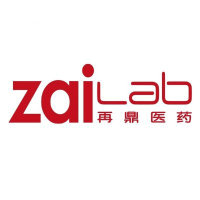
Zai Lab Ltd
HKEX:9688


| US |

|
Fubotv Inc
NYSE:FUBO
|
Media
|
| US |

|
Bank of America Corp
NYSE:BAC
|
Banking
|
| US |

|
Palantir Technologies Inc
NYSE:PLTR
|
Technology
|
| US |
C
|
C3.ai Inc
NYSE:AI
|
Technology
|
| US |

|
Uber Technologies Inc
NYSE:UBER
|
Road & Rail
|
| CN |

|
NIO Inc
NYSE:NIO
|
Automobiles
|
| US |

|
Fluor Corp
NYSE:FLR
|
Construction
|
| US |
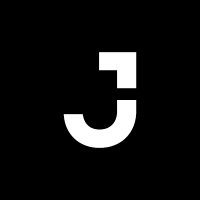
|
Jacobs Engineering Group Inc
NYSE:J
|
Professional Services
|
| US |

|
TopBuild Corp
NYSE:BLD
|
Consumer products
|
| US |

|
Abbott Laboratories
NYSE:ABT
|
Health Care
|
| US |

|
Chevron Corp
NYSE:CVX
|
Energy
|
| US |
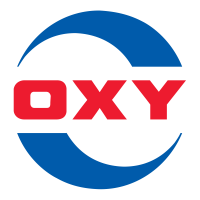
|
Occidental Petroleum Corp
NYSE:OXY
|
Energy
|
| US |
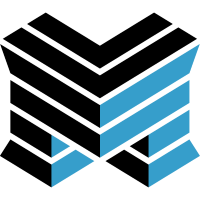
|
Matrix Service Co
NASDAQ:MTRX
|
Construction
|
| US |
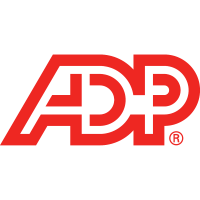
|
Automatic Data Processing Inc
NASDAQ:ADP
|
Technology
|
| US |
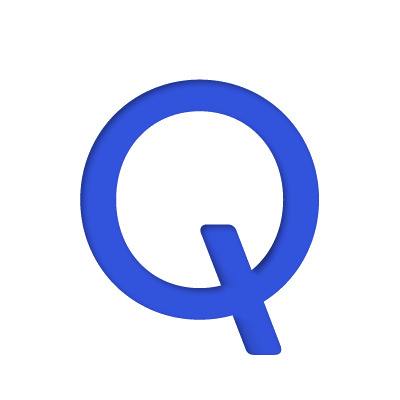
|
Qualcomm Inc
NASDAQ:QCOM
|
Semiconductors
|
| US |

|
Ambarella Inc
NASDAQ:AMBA
|
Semiconductors
|
Utilize notes to systematically review your investment decisions. By reflecting on past outcomes, you can discern effective strategies and identify those that underperformed. This continuous feedback loop enables you to adapt and refine your approach, optimizing for future success.
Each note serves as a learning point, offering insights into your decision-making processes. Over time, you'll accumulate a personalized database of knowledge, enhancing your ability to make informed decisions quickly and effectively.
With a comprehensive record of your investment history at your fingertips, you can compare current opportunities against past experiences. This not only bolsters your confidence but also ensures that each decision is grounded in a well-documented rationale.
Do you really want to delete this note?
This action cannot be undone.

| 52 Week Range |
10.62
25.65
|
| Price Target |
|
We'll email you a reminder when the closing price reaches HKD.
Choose the stock you wish to monitor with a price alert.

|
Fubotv Inc
NYSE:FUBO
|
US |

|
Bank of America Corp
NYSE:BAC
|
US |

|
Palantir Technologies Inc
NYSE:PLTR
|
US |
|
C
|
C3.ai Inc
NYSE:AI
|
US |

|
Uber Technologies Inc
NYSE:UBER
|
US |

|
NIO Inc
NYSE:NIO
|
CN |

|
Fluor Corp
NYSE:FLR
|
US |

|
Jacobs Engineering Group Inc
NYSE:J
|
US |

|
TopBuild Corp
NYSE:BLD
|
US |

|
Abbott Laboratories
NYSE:ABT
|
US |

|
Chevron Corp
NYSE:CVX
|
US |

|
Occidental Petroleum Corp
NYSE:OXY
|
US |

|
Matrix Service Co
NASDAQ:MTRX
|
US |

|
Automatic Data Processing Inc
NASDAQ:ADP
|
US |

|
Qualcomm Inc
NASDAQ:QCOM
|
US |

|
Ambarella Inc
NASDAQ:AMBA
|
US |
This alert will be permanently deleted.
 Zai Lab Ltd
Zai Lab Ltd





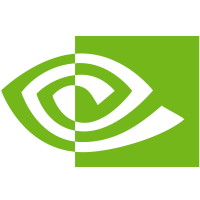
 You don't have any saved screeners yet
You don't have any saved screeners yet

Hello, ladies and gentlemen. Thank you for standing by, and welcome to Zai Lab's Second Quarter 2021 Financial Results Conference Call. [Operator Instructions] As a reminder, today's call is being recorded.
It is now my pleasure to turn the floor over to Billy Cho, Chief Financial Officer of Zai Lab, who will make introductory comments.
Thank you, operator. Good morning, and welcome, everyone. After the market close yesterday, Zai Lab issued a press release, providing the details of the company's financial results for the second quarter ended June 30, 2021 as well as product highlights and corporate update. The press release is available in the Investor Relations section of the company's corporate website at ir.zailaboratory.com.
Today's call will be led by Dr. Samantha Du, Zai Lab's Founder, Chairperson and Chief Executive Officer. She'll be joined by Tao Fu, Chief Strategy Officer, who will provide more details on our product portfolio along with the pipeline and commercial progress. I will conclude with comments on our financial results in the quarter. Dr. Alan Sandler, President, Head of Global Development, Oncology; Dr. Harald Reinhart, Chief Medical Officer for Autoimmune and Infectious Diseases; and Jonathan Wang, Head of Business Development, will also be available to answer questions during the Q&A portion of the call.
As a reminder, during today's call, Zai Lab will be making certain forward-looking statements within the meaning of the Private Securities Litigation Reform Act of 1995, including our business plans and objectives and timing and success of our clinical trials, regulatory applications and commercial launches. These forward-looking statements are not guarantees of future performance, and therefore, you should not put undue reliance upon them. These statements are subject to numerous risks and uncertainties that could cause actual results to differ materially from what we expect. I refer you to our SEC filings for a discussion of risk factors that could cause our actual results to differ materially from those discussed today.
At this time, it is my pleasure to turn the call over to Zai Lab's Founder, Chairperson and Chief Executive Officer, Dr. Samantha Du.
Thank you, Billy. Hello, everyone, and thank you all for joining us. On this call, I'll discuss highlights from our second quarter and provide the latest update to what we expect to accomplish for the remainder of 2021.
Consistent with our past track record, Zai Lab continues to execute with speed and quality across our organization during the second quarter. We successfully launched QINLOCK in China in record time. QINLOCK is our third commercial product in oncology to launch over the last 16 months and the first product in what we expect to become a world-class gastric cancer franchise. We continue to generate strong revenue growth from our first 2 products, ZEJULA and Optune, and we entered into 3 strategic collaborations with Mirati, MacroGenics and Schrödinger, respectively, to further steepen and strengthen our disease area stronghold and our global pipeline. Tao and Billy will discuss this achievement in more detail.
We now have 25 globally innovative assets in our pipeline and the quality, depth and breadth of our pipeline will continue to grow. Notably, 12 products are late-stage development, of which 5 has already been approved in the U.S. and 3 have received FDA Breakthrough Therapy Designation. In addition, our growing pipeline now includes 11 early-stage programs with worldwide rights, including 3 in global clinical trials. We achieved a broad, innovative, validated portfolio through success for allowing us to achieve significant sales within just 2 years. We will continue to leverage our scale and operating excellence to expand our pipeline with greatly innovative products through strategic partnerships and internal R&D.
We expect to achieve many exciting milestones across our product platform throughout the remainder of 2021. We expect approval of our fourth commercial product, NUZYRA, for community-acquired bacterial pneumonia and acute bacterial skin and skin structure infection by the NMPA. We also continue to make progress on additional regulatory filings and activities. We expect to have a discussion with the NMPA on the filing strategy for efgartigimod in the near future. We anticipate numerous data readouts during the rest of this year: for QINLOCK in second-line GIST; for margetuximab in gastric cancer; for CLN-081 in non-small cell lung cancer; for TPX-0022 in non-small cell and gastric cancer; and for other product candidates in our global platform.
We continue to invest in our worldwide organization and facilities. During September, we will expand our presence in the U.S. by formally opening a clinical development and business facility in Cambridge, Massachusetts, to tap into the Boston area biopharma ecosystem. In the meantime, our existing R&D and business centers in the San Francisco Bay Area and in China will continue to grow. Zai Lab has grown substantially since our inception 7 years ago. And with the abundance of growth opportunities we see, we strongly believe that we're still in the early stage of our growth trajectory. And given the current breadth and depth of our portfolio, we have decided to hold an R&D Day on September 22 to take a deep dive into our pipelines and disease stronghold. We can highlight the fundamental growth potential of Zai. We hope you come away from this with a more comprehensive understanding of what we are doing and what we expect to accomplish in the future.
We believe we have a once-in-a-generation opportunity to build a leading global biopharmaceutical company with a strong foundation in both China and in the U.S. Zai is in a great position to capture growth opportunities with our global infrastructure and ever-growing first and/or best-in-class portfolio. We remain as committed as ever to our mission: to develop innovative medicines addressing the unmet medical need for patients around the world. We believe by doing this will benefit our shareholders as well.
With that, I'll now ask Tao to discuss our performance and perspective in more detail. Tao?
Thank you, Samantha. I will comment on the launch performance of our 3 commercial products and on progress we have made in the quarter in our main disease franchises: lung cancer, gastric cancer, hematology, autoimmune disorders and infection diseases.
ZEJULA continued to perform very well in the second quarter, and we achieved significant sequential revenue growth. As a reminder, ZEJULA is approved in China for first- and second-line ovarian cancer and is the only PARP inhibitor monotherapy approved for all-comers in the first line. So this provides significant differentiation from other PARP inhibitors. The inclusion of ZEJULA in NRDL starting from March of this year provided a major momentum for the ZEJULA launch. One key leading indicator for the successful launch and NRDL implementation is hospital listing. Our team has been laser-focused on increasing hospital listings and as of June 30, 2021, ZEJULA has been listed in more than 800 hospitals in China, which represents a more than sevenfold increase from just prior to the NRDL implementation in March 2021.
Combined with the differentiated label, our successful market asset strategy lays the foundation for strong volume growth in the second half of the year and beyond. We remain confident that over time, ZEJULA will become the market-leading PARP inhibitor in ovarian cancer in China. Similarly, the launch of Optune is going well. As a reminder, Optune is the first innovative medical device supported by commercial health insurance in China and also has been covered in 14 supplemental insurance plans since its launch in June 2020. During the second quarter, we held extensive multidiscipline physician education campaigns to increase brand adoption, and we were pleased with the feedback we received from treatment specialists.
Importantly, on the development side, we're working with our partner, Novocure, to extend indications of tumor treating fields in areas of large unmet medical needs globally and in China. We look forward to additional clinical data readouts in lung, pancreatic, liver and ovarian cancers, in brain metastasis and in glioblastoma with high-intensity arrays over the next few years. And we continue to target a filing of tumor treating fields for malignant pleural mesothelioma later this year.
As Samantha mentioned, we achieved another important commercial milestone in successfully launching QINLOCK in fourth-line GIST in China in May, our third oncology launch in the last 16 months. QINLOCK is another great example of our track record of accelerating regulatory filing and approval of innovative oncology products. We were able to file the NDA for QINLOCK in China only 2 months after FDA approval, and we received NMPA approval 8 months after NDA acceptance. In July, QINLOCK was included in the Chinese Society of Clinical Oncology Guidelines for Diagnosis and Treatment of Gastrointestinal Stromal Tumors 2021 as an option for second-line treatment for advanced GIST patients. We are encouraged by our initial launch performance and look forward to updating you with our progress through the remainder of the year.
Let's move on to progress in our product pipeline, starting in lung cancer, where we continue to build a disease stronghold with 6 products currently in clinical development. In June, we entered into an important strategic collaboration with Mirati and obtained the right to research, develop, manufacture and exclusively commercialize adagrasib, a potential best-in-class small molecule KRAS G12C inhibitor in Greater China. Adagrasib received FDA Breakthrough Therapy Designation in June for the potential treatment of non-small cell lung cancer patients who harbor the KRAS G12C mutation following prior systemic therapy. Zai will support accelerated enrollment in key global registration-enabling clinical trials of adagrasib in KRAS G12C cancer patients, including non-small cell lung cancer and colorectal cancer.
Mirati has announced their intention to file adagrasib for second-line non-small cell lung cancer in the U.S. in the second half of 2021. We believe adagrasib has best-in-class potential, and we will also aim to make it first-in-class in China, where there are currently no ongoing clinical trials in this product category. Adagrasib is a great addition to our lung cancer franchise and complements other promising byproducts being developed for lung cancer, including tumor treating fields repotrectinib, CLN-081 and TPX-0022.
For tumor treating fields, Zai initiated the China portion of the Phase III pivotal LUNAR trial and the Phase III pivotal METIS trial in brain metastasis for non-small cell lung cancer. You will recall that in May, Novocure announced that the FDA approved their IDE supplement for LUNAR, reducing enrollment requirement by about half and shortening the required patient follow-up from 18 months to 12 months, potentially accelerating a completion of the trial by more than a year.
For CLN-081, in June, Zai's partner, Cullinan, announced Phase I/IIa interim data in non-small cell lung cancer EGFR exon 20 patients. CLN-081 continues to demonstrate its best-in-class potential with good activity and encouraging safety and tolerability.
Let's move on to gastric cancer, a Zai disease stronghold with 7 products currently in clinical development, including QINLOCK and bemarituzumab. As I mentioned earlier, we're actively launching QINLOCK in fourth-line GIST supported by the compelling data generated from the INVICTUS Phase III study. In the second half of this year, our partner, Deciphera, expect to receive data from the INTRIGUE trial of QINLOCK versus sunitinib in second-line GIST. Other gastric cancer products also made significant progress in the quarter, including bema, the monoclonal antibody against FGFR2b. In April 2021, Zai's partner, Amgen, was granted Breakthrough Therapy Designation by the FDA for bema as a first-line treatment for patients with FGFR2b overexpressing HER2-negative metastatic and locally advanced gastric and gastroesophageal junction adenocarcinoma in combination with modified FOLFOX.
In June, Zai's partner, Turning Point, was granted Orphan Drug Designation by the FDA for TPX-0022 in gastric cancer, including gastroesophageal junction adenocarcinoma. In our hematology franchise, in May 2021, Zai's partner, Regeneron, resumed enrollment in the Phase II potentially pivotal clinical odronextamab in patients with follicular lymphoma and diffuse large B-cell lymphoma. We look forward to initiating this important clinical trial in China.
Since our last earnings call, we also entered into 2 other strategic research and development collaboration to bolster our global oncology pipeline. In June, Zai and MacroGenics announced that the 2 companies have entered into an exclusive collaboration and license agreement involving up to 4 immuno-oncology molecules. The first collaboration program covers a lead research molecule that incorporates MacroGenics' DART platform and binds CD3 and an undisclosed target that is expressed in multiple solid tumors.
The second program covers a target to be designated by MacroGenics. For both molecules, Zai received commercial rights in Greater China, Japan and Korea and obtains an option to convert the lead research program into a global 50-50 profit sharing arrangement upon achieving a predefined clinical milestone. For 2 additional early-stage molecules, Zai Lab has exclusive global development and commercial rights. Earlier this month, Zai and Schrödinger announced a global discovery, development and commercialization collaboration focused on a novel target in the DNA damage response pathway, a key research interest for Zai Lab in oncology. Schrödinger is an industry leader in providing computational platforms using drug discovery. The research program will be conducted jointly by the 2 companies' scientific teams and Zai Lab will have exclusive development and commercial rights globally. This initiative will complement our existing discovery efforts in DNA damage response pathway in addition to potential combinatorial approaches within our pipeline with such products as the PARP inhibitor ZEJULA and ZL-2309.
In our autoimmune franchise, in July, Zai Lab's partner, argenx, announced myositis and bullous pemphigoid as 2 new indications for efgartigimod at its R&D Day. To date, 5 clinical trial applications for efgar filed by Zai have been approved. With all of this progress, as you can see, Zai's development and commercialization operations are hitting on all cylinders. We have an abundance of growth opportunities, and we very much look forward to sharing our further progress with you throughout the year. And now Billy will discuss our financial results in the quarter.
Thank you, Tao. We continue to remain in high growth mode, and our financial results reflect strong progress across our business. Today, I'll briefly summarize our financial results for the second quarter as well as year-to-date 2021, which are both in line with our internal expectations.
Revenues for the second quarter and year-to-date 2021 were $36.9 million and $57 million, respectively. Over the same period last year, revenues were $11 million and $19.2 million, respectively. We're still early in the revenue ramp cycle, so we are very pleased with the successful launches and sales trajectory of our first 3 oncology products.
ZEJULA sales for the second quarter and year-to-date 2021 were $23.4 million and $36 million, respectively. Over the same period last year, ZEJULA sales were $7.5 million and $13.8 million, respectively. Optune sales for the second quarter and year-to-date 2021 were $9.5 million and $16.6 million, respectively. And over the same period last year, Optune sales were $3.5 million and $5.4 million, respectively.
As for our third product update, we successfully launched QINLOCK on May 20 and achieved $4 million of revenue for the quarter. Research and development expenses were $142.2 million for the 3 months ended June 30, 2021 compared to $68.3 million for the same period in 2020. The increase in R&D expenses was primarily attributable to additional strategic partnerships, including a $65 million upfront payment to Mirati and a $25 million upfront payment to MacroGenics; expenses related to ongoing and newly initiated late-stage clinical trials; and pay- and payroll-related expenses from increased R&D headcount.
Selling, general and administrative expenses were $54.4 million for the 3 months ended June 30, 2021 compared to $23.8 million for the same period in 2020. The increase was primarily due to payroll- and payroll-related expenses from increased commercial headcount and additional commercial activities, and Zai Lab continued to expand its commercial operations in China. For the 3 months ended June 30, 2021, Zai Lab reported a net loss of $163.3 million or a loss per share attributable to common stockholders of $1.76 compared to a net loss of $80.6 million or a loss per share attributable to common shareholders of $1.08 for the same period in 2020. The increase in net loss was primarily attributable to additional strategic partnerships, increased R&D and SG&A expenses for the reasons I just mentioned.
As of June 30, 2021, cash and cash equivalents, short-term investments and restricted cash totaled $1.77 billion compared to $1.19 billion as of June -- December 31, 2020. We would now like to turn the call back over to the operator to open the line for questions. Operator?
[Operator Instructions] We have the first question coming from the line of Yigal Nochomovitz from Citigroup.
So you have a very rich pipeline of in-licensed assets that are making their way through clinical development and now 3 approved products. So are you still as focused on the BD effort to bring in new assets into the company? Or do you believe you have a sufficiently rich pipeline and will focus more on developing the assets that you've already bought?
Thank you, Yigal. This is Samantha. I will let Jonathan to address the question.
Thank you for the question. Look, I think that Zai's BD strategy always follows the company's current strategy. And this has really been evolutionary for us. I think we've been really positioned ourselves as the plan of choice in China. So I think continue to execute on bringing globally first-in-class, best-in-class assets into our pipeline to complement it within oncology, within autoimmune and within infectious diseases.
But I think beyond that, we're also looking for transformative deals. We're also looking for opportunities to go beyond our existing therapeutic areas, just like we have done in the past with efgar, with the Regeneron assets, I think we'll continue to do that. And I think even beyond that, like what we have done recently with the MacroGenics, with the Schrödinger deals. I think we're going to support discovery assets. I think BD is always evolving. And I think it's multidimensional, it's for the growth of the company.
Okay. And I just had one follow-up. So by my count, I believe you have 11 oncology products in your portfolio with 2 already approved. So that opens up the possibility of investigating combination strategies within your portfolio. So that being said, I'd be curious to know which products do you believe would make the most sense to evaluate in combination clinical trials and in what tumor types?
Thanks, Yigal. Alan, our President of Oncology Development, please take the questions.
Oh, sorry, I was on mute. Thank you for the question. And yes, this is one of the great advantages that we have here at Zai given the large number of assets in the portfolio and additional ones forthcoming. I think that there are -- opportunities would exist interestingly in our gastric franchise and our lung franchise, I think, in particular, given the broad number of assets that we have in there and the targeted approach with which we have.
So we're looking at a number of different combinations that may be associated with KRAS, also a combination in lung and also in gastric with the various combinations that are available, including PD-1, our large HER2 agent met, et cetera. So I think that would give you a hint of some of the areas with which we're looking. Have I addressed your question?
Yes.
We have the next question. This is coming from the line of Michael Yee from Jefferies.
We have 2 questions. One was on the recent Schrödinger deal, but just more broadly strategically, should we anticipate that you are going to do more deals that bring in more global rights and with an intention of developing and bringing in more internally developed R&D programs rather than an in-license of other programs rather instead of developing your own internal and to do it globally? That's question one. How should we think about that?
And question two is based on a comment around expanding outside your therapeutic areas. I think you have a very strong focus on oncology, et cetera. That's pretty well known. Can you just maybe expand upon the idea to go beyond oncology? And to what other areas should we expect or could anticipate so we're not surprised?
Thank you, Michael. Tao, do you want to comment on the AI and the Schrödinger deal?
Yes. Sure, Samantha. Mike, thank you very much for your questions. So yes, the Schrödinger collaboration is a pretty exciting new partnership for us. As you may know, they are the industry leader in physics-based computational chemistry platform and really have a very strong existing track record. So we have this collaboration with them, really focused on a key area of R&D interest for Zai Lab, the DNA damage repair pathway on a very interesting target, which we will disclose later.
So really trying to leverage the capabilities of both companies and obviously get Zai Lab global rights on this particular target. Yes. So the AI area is a new promising area. We'll try to stay on the cutting edge. We're really trying to use external collaboration to complement our existing capabilities in areas such as AI discovery.
Yes. I think just to elaborate on what Tao was saying, the discovery technology platform collaboration that, Michael, you sort of likely mentioned, is a way for us to expand our discovery capabilities and to complement our existing discovery technology platforms for us to do internal global discovery development. But having said so, we will continuously do what we have done very well, which is the effect, we see differentiation, we see unmet medical needs. Whether for China or for global, it's based on the [ seat with the other pipeline ]. Thank you for question number one. Go ahead.
Makes sense. Yes, both are important. And then the idea of expanding therapeutically, could you comment on what areas could be of interest?
Yes. We actually have many opportunities, more and more inbound interest from potential customers who have really give us a lot of credit for what we have done for the partnerships. And so we're actively looking. We really expand horizontally. We want to expand with [ other asset ] into -- if it's new therapeutic area. So that has to have such as an example, expand into the collaboration with argenx for efgartigimod, which offers a pipeline product from opportunity. So that's kind of still when we do expansion we are looking for. That may horizontally -- sorry, vertically, we're always looking for more opportunities to complement our existing pipeline.
We have the next question. This is coming from the line of Seamus Fernandez from Guggenheim Securities.
Great. So maybe just if we could cover the dynamics around just investor questions that we've gotten and concerns that have been raised with regard to some of the volatility in shares in China and where biotech fits strategically in terms of the Chinese government's focus on certain areas. I think Samantha, you're uniquely well positioned to comment on those concerns. Obviously, Zai is well outside of some of the concerns that have been raised for other companies with regard to how the company's accounting has been executed, things like that. But just maybe help us understand the importance and strategic positioning of the biotech industry in China and its importance to the continued growth and local growth in China.
And then the second question, Billy, I was just hoping you could give us a sense of the potential payments that we could see to collaboration partners as it relates to milestones that we should be thinking about for 2021 and 2022, given the very robust series of pipeline opportunities. And then just one final question. Should we see a meaningful data set, particularly either LUNAR or one of the other major data sets come forward? How are you guys thinking about manufacturing capabilities with your partner, Novocure, in the context of TTF? And how do you hope to address that?
Thank you, Seamus. The first question is, since you asked me to speak about the sector. And actually, we do agree. We have seen lots of volatility notice, [ along China concept company ] listed on NASDAQ. And so we had some -- quite a lot of dividends myself also, and there were sometimes in -- with different agencies to discuss what does that mean to Zai Lab. And also, of course, Zai Lab's -- companies like -- biotech companies like Zai Lab. So we -- from our due diligence, of course, from our understanding and I'm not sure we are representing any government body. But we believe that the actions that caused the recent market volatility are unrelated to Zai's particular business.
And also recent events, including the Chinese government continues to support the innovative biotech industry. And for example, with new CDE profit guidelines issued on July 2, oncology drugs meet the bars for innovation in drug development. And these actually are very helpful for companies really focusing on differentiated first or best-in-class product portfolios instead of focus on doing [indiscernible] also recently renewed the ICH guideline membership status, which shows their continued strong commitment to harmonization -- global harmonization. And also quite honestly, other sectors already very heavily regulated. But if you're looking at the 14th China's economical Five-Year Plan, and biotech sector is considered one with a very strong supported pillar industry. And the focus really is on innovation and promote integration, innovation of biotechs and the salary for biotech and biopharmaceutical and we boost the -- in China and the innovation capabilities from the mental side.
And so from all the activities we're involved, also including some minor details like for these sectors, [ first, they apparently have ] tax reduction plans in Shanghai, Pudong [ rural basin ]. So there are many positive news. Of course, those only perhaps now hidden to the public. But what we have seen so far, we're very confident on Zai Lab's fundamental growth. So Billy, do you want to address the second question?
Yes. Sure. Seamus, I'll take a stab at the second and third question. So the question related to upcoming milestone type of payments, as you know, Seamus, we don't give guidance -- forward-looking guidance on those figures. But rest assured, it's immaterial compared to, let's say, the upfront portion or the actual royalty that kicked in after the commercialization. So you would have seen some disclosures along the way.
I know that Turning Point announced yesterday, and they did disclose we made a $5 million payment because we achieved a certain development milestone. And you can expect something kind of along that ZIP code when we have a notable sort of development or regulatory milestone achieved. But you can kind of get a sense, right, Seamus, that in terms of materiality, it's quite limited compared to the upfront royalty, which is at the onetime upfront and then at the back end.
In terms of your question on sort of the kind of ramping up volume and what that means in terms of manufacturing capabilities for tumor treating fields, and I'll let Tao add any other additional comments. But yes, I mean, you're right. Your observation is right in that if LUNAR trial is successful with final Phase III data out next year, we're taking -- we're talking about a different level of scale. And are there opportunities to drive operating leverage at that volume, at that scale, especially China scale? And these are the questions that are -- that we've been having these discussions with our partner.
We have the next question from the line of Anupam Rama from JPM.
A couple of broader macro question, following up on the last question. But specifically, there's been a lot of headlines on sort of Chinese regulators' proposed rules on oncology trials. Maybe you can talk about what the implication for developments here are in the region for your broader pipeline. And then, Samantha, digging into your comments a little bit more on the PCAOB auditing and sort of what's going on in China there. You guys have PCAOB not reviewing your financials, the 10-K sort of risk. What -- how are you strategically thinking about this situation and kind of addressing it over the long term?
First of all, Anupam, thank you for the question. So you're asking about to elaborate on the July 2 guideline? First -- is that the first question?
On the oncology proposed -- yes.
Right. Right. Okay. So as I mentioned earlier, we think that guidance for the industry, first of all, is that still guidance for [ solicitated ] industry input. We really think that we're going to meet the bar for innovation for oncology development. And as we all know, China has many, many PD-1 and PD-1 like the biosimilar, me-toos or [ me not worse ], right? And I think it's from many angles, not only -- not maybe respond that. If CDE continues to support it, that really means it doesn't -- it's not helpful for patients who already should have been exposed through the many approved products include -- instead of exposed to the placebo arm.
And secondly, so what we are really trying to emphasize is actually closer to FDA's standard on oncology, which is, number one, you have to show differentiation and to address unmet medical needs. And secondly, if there are already gold standard established, when you need to do comparator studies instead of placebo trials. I think that's the fundamental on that particular guideline. So that fits very well with Zai Lab's strategy in our pipeline. And from day 1, we regulate internally or externally to develop products. That's how we use the global standard to say whether it shows first class or best in class or only in class. That's all the criteria.
And in terms of you asked also perhaps about overall the country's future, right, about the government issue, mainly at the new policy. And again, those really have a lot to do with the overall governmental policies, direction of China growth over the last 40 years. They also want to balance different industries and how to control the patent and how to be [indiscernible] the patent and now see how to balance the population, which we've seen in the educational sector, how to didn't provide the equal opportunities to 1.4 billion population. But having said that, those are not our area of expertise. And honestly, those have been debated for a long time. And I'm a little bit surprised actually, the market reacted very fast with that kind of activity because this has not been as new. This has been long debated, even since 2018.
And overall, Zai Lab, we believe we're very well positioned. So the future generation of biopharmaceutical companies had China exposure, but also continually expanding in the U.S. continuously instead of just China for China but really China for global and global for global, those directions we're taking, I think that along a very positive trajectory, especially for companies that are already at Zai Lab space, we believe that this gives us a strong opportunity to continue to see a growth, the strong growth from Zai Lab. And Billy, do you want to complement on anything else?
Yes, sure. Thanks, Samantha. Anupam, you asked about PCAOB, so I'm just going to mention 2 quick broad points. First, I just want to, as you know, remind everyone here that we are 100% privately owned enterprise with a very simple legal structure. No VIE. Never have, never will. And our financial reporting has historically been and continues to be on a U.S. GAAP basis and in accordance with PCAOB standards as a domestic issuer now, which is why we're having a quarterly call with quarterly filings. We have also completed a full starting [indiscernible] historically as well and ongoing.
And the second broad point is that where, of course, we have same with infrastructure in China, but we do have 8 offices around the world, and we're making investments in the U.S. as well. And that, I guess, without going to details, I can make the statement that we do plan to have options available to us to significantly limit the risk that's been publicly kind of published so far. And you can also look towards our 10-Q filings for additional info on those. But thanks for your question.
We have our next question, which is coming from Jonathan Chang from SVB Leerink.
First question, are there certain subsectors or spaces within Chinese biopharma that could be more or less vulnerable to changes in the regulatory landscape in the future?
Well, I think for companies like Zai Lab, right, as I said, focusing on innovation, focusing on unmet medical needs for patients globally. I think, I personally believe we are in the best sector in biotech.
Got it. And maybe just a second question. Can you provide any additional color on -- around how investors should be thinking about second half revenues? Maybe specific to ZEJULA, are there additional metrics you can provide to give us a sense of how ZEJULA is performing relative to competitor programs?
Billy?
Yes, sure. So thanks, Jonathan. We're obviously quite pleased with the sales momentum that we're seeing so far year-to-date. We saw a nice volume uptake and market share gains. Our NRDL implementation, while early, it's off to a fast start, and you saw our press release citing that starting from the implementation date of March 1 until the end of June, we actually increased the number of hospital listing by over 7x or about sevenfold, which is actually closer to a kind of more close to 850 than 800. So we're quite happy with the implementation going so far and look forward to, of course, kind of building on the momentum for the back half of the year as well, and we're pretty confident. We're actually very confident that we will hit our internal goals. So Jonathan, we're not yet giving kind of full year sales guidance just yet, but maybe you can see some statistics that we shared around hospital listings. Our hospital coverage is also expanding as well, and now we have over 2,000 hospitals in our coverage.
We have the next question. This is coming from Ziyi Chen from Goldman Sachs.
Sure. I look at the pipeline, actually, this time, we have specifically left out the internal R&D pipeline, which now we counted about 13 projects in targeting identification and about 10 projects in the range of lead optimization to Phase I studies. So a couple of questions regarding the in-house discovery strategy. Number one, is Zai Lab team up with a couple of AI companies. Actually, it's not only Schrödinger, but back in March, I see there's collaboration also with [ Alphamab ]. So I'm trying to understand a bit more about in terms of building the in-house pipeline, will external collaboration on the discovery side will be one of the major drivers? Or still we are building -- you're building up a pretty strong in-house team. If we can know the number, how big that discovery team is now within Zai Lab? And particularly, I think in terms of the pipeline, covering the oncology autoimmune. But in terms of a target selection, so is there any specific strategy you're going to be following in terms of picking the right target to work on?
My second question is still trying to get a sense on the PARP competition, particularly towards the end of this year, I think Zai Lab has a very good chance to get into NRDL for the first-line indication. But at the same time, we start to see some of the local competitors, including Hongray medicine Beijing, they are also being pretty aggressive in terms of marketing for their products. But of course, it's a third-line indication instead of second line, first line. And based on our track, in the second quarter -- well, first half of this year, probably Zai Lab already got about 25% to 30% market share in the PARP market. So if you guys get the first-line indication, what kind of market share we should be looking at in 2 to 3 years' time?
Thank you, Ziyi. Your first question related to our in-house discovery. I think as you can see in the news release, we announced our platform of internal discovery platform with global rights. And so I'd just like to remind the audience, this is to have 7 years old company. And we -- 5 years, in fact, in internal discovery, increasingly investing in different internal discovery with our in-house platforms, but as well as the expansion also like we talked about earlier, MacroGenics' bispecific platforms, we talked about working with Schrödinger and other universities, which we did not really feel it's a materially not to expand or to elaborate. But having said so, what I'm trying to say is I'm very pleased with 5 years internal discovery efforts. We started with very small team in Shanghai, now the team is expanding not only in Shanghai, but in Suzhou, in San Francisco Bay Area. We're also going to very soon amongst our opening of Boston center -- a Boston -- Cambridge, Massachusetts site and more focus on global development and also focusing on business like all kinds of business activities.
So that's, I think, the first thing I want to say. Secondly, I think we are no longer working within a wall for R and for D because we are in a different stage of track advantage. They are constantly technologies which we, as a one company, cannot have it all. And so with that, we understand we need to collaborate, we need to collaborate with companies that have AI capabilities. So companies have strong computational strategy capability or companies that have strong bispecific platforms and which complement what we do have, but which doesn't mean we will not continually to add internally our technology platforms. And all of this, I am saying, going forward, you will continue to see we have more and more collaboration, some with value, some with the mature companies.
But our intention is now say we do not want to continue our licensing model, what works we're not going to fix it. We'll continue doing -- continue as we accelerate internal discovery, we'll also continue to look for the best or unmet medical need or first-in-class assets to complement not only for our China rights pipeline, but also global pipeline. And Zai Lab now is in this scale. We have the capacity, we have the people. And I think this is where we're going. But in terms of specific targets, those details, hopefully, we can -- because of the time of the day, we convert this on a sidebar or we can talk about this upcoming R&D Day. Thank you, Ziyi. And Billy, do you want to address this question regarding...
Yes, sure. Yes. So the -- I'll take your second question about ZEJULA in relation to NRDL and some competition that you referenced in Hongray and other domestic companies. So just to reiterate, ZEJULA is the only PARP approved for all-comers in the first-line setting. It is a once-daily monotherapy, excellent safety profile and has the ability to cross the blood-brain barrier and we already have it in the second line for NRDL.
And we strongly -- we actually believe that's already been positioned as the best-in-class PARP for all ovarian cancer patients. So I also like to -- kind of you also mentioned the next year with first line, volume taking off potentially. You know what this look like in terms of market share. While we don't give guidance, I know you've heard us historically say that we're confident that we can be the market share leader, and we stick by that.
I'd also like to point you towards some ex China statistics in the U.S. right now. ZEJULA has 51% market share in first line. And in Japan, they have 68% market share. So again, we're not giving the exact kind of percentage for China, but we have a very robust strategy on how to firmly establish ZEJULA as the best-in-class PARP inhibitor, and we think we're making very good progress toward that end. And also on NRDL for first-line ovarian cancer, it is eligible for negotiation this year. And we actually -- at the end of July, the NHSA published a review list, right, for the drugs that are in the -- that are eligible for NRDL negotiation and ZEJULA is included. So we'll leave it at that. Thank you for your question.
Yes. Yes, I think actually also, you correctly pointed out we're the only, we're the only all-comers first-line monotherapy approved in China and eligible for NRDL inclusion for next year.
The next question comes from Yang Huang from Crédit Suisse.
Congrats, management, for the nice commercial progress in China in the second quarter. I have 2 questions. First, tumor treating field competitive landscape in China. So in the last year, we are starting to see a few China -- domestic China companies starting conducting their tumor treating field device clinical trial in China. And potentially in the next few years, we're going to see clinical data from those studies. So I just want to have management's comments on competitive landscape in the long term in terms of tumor treating field device in China. That's my first question.
Yes. I think Yang, that's a good question you asked. First of all, as you correctly mentioned, it's a local company still in clinical development stage and still focus on a very narrow indication and which we do not know that is how the results will come out. And that's in the next couple of years, we will see. So it's too early for us to say whether there is any competition because we're also expanding. And as you've seen, we have many other indications, large trials ongoing, and some already past Phase II going into Phase III, those are a lot of indications. So we are very comfortable at this stage with our only data. And even if there any drugs, we welcome any treatment options. I'm sure it's proven to be successful.
There are going to be people going to come up, but whether it's me-too or [ me not worse ] whether it's even qualified [ me not worse ], we'll see. And whether it's -- by then, Zai will have very strong footprint. In the areas we are in, we have very strong confidence in this particular opportunity. And we've been working on opportunity ever since we in-licensed. We've got very quick approval into the clinical guidance. So basically, patients -- doctors put this already into guideline -- treatment guideline. So we'll see, but we are very optimistic.
Great. And my second question is about our KRAS track. So I noticed in our press release, we did not mention our kind of clinical plan for KRAS with the license from Mirati. So can you comment on that?
Alan, do you want to cover that?
Sure. Thanks, Samantha, and thanks for the question. So our -- a couple of comments. One, we're extremely excited at Zai to be partnering with Mirati on this very interesting and wonderful molecule in KRAS. And as a former thoracic oncologist, having spent over 20 years trying to come up with something for KRAS, this is extremely exciting. We had the opportunity to participate in all of the mono and combo global trials. We also have the potential to run exploratory local studies within our own pipeline assets such as with the PD-1 and LAG-3 and PD-1, et cetera. And so it's a bit early to comment on what local studies would do. But what I'd like to emphasize is that we will be participating with Mirati in their global combination -- in their global studies. And there'll be more to comment as we move further along.
Thank you. That concludes our question-and-answer session for today. I would now like to hand the conference over to our host for any ending remarks.
I think maybe Samantha is on mute. But...
Oh, so there's still -- so basically, we are done with the Q&A?
Yes. Q&A is done, Samantha.
Okay. Thank you, operator. And sorry for I was on mute and might be not picking up my sentence. Thank you, operator. And I want to thank everyone for taking the time to join us on the call today. We appreciate your support and look forward to updating you periodically on our progress throughout the year. Operator, you may now disconnect this call. Thank you all.
Ladies and gentlemen, that concludes our conference call for today. Thank you all for your participation. You may disconnect now.